First Alert SA511CN2 Handleiding
First Alert
Niet gecategoriseerd
SA511CN2
Bekijk gratis de handleiding van First Alert SA511CN2 (6 pagina’s), behorend tot de categorie Niet gecategoriseerd. Deze gids werd als nuttig beoordeeld door 70 mensen en kreeg gemiddeld 5.0 sterren uit 35.5 reviews. Heb je een vraag over First Alert SA511CN2 of wil je andere gebruikers van dit product iets vragen? Stel een vraag
Pagina 1/6

IMPORTANT! PLEASE READ CAREFULLY AND SAVE.
This user’s manual contains important information about your Smoke Alarm’s
operation. If you are installing this Smoke Alarm for use by others, you must
leave this manual—or a copy of it—with the end user.
USER’S MANUAL
Printed in Mexico
M08-0194-000 Q 03/07
FIRE SAFETY TIPS
Follow safety rules and prevent hazardous situations:
1) Use smoking materials properly. Never smoke in bed. 2) Keep matches or
lighters away from children; 3) Store flammable materials in proper containers;
4) Keep electrical appliances in good condition and don’t overload electrical
circuits; 5) Keep stoves, barbecue grills, fireplaces and chimneys grease-
and debris-free; 6) Never leave anything cooking on the stove unattended;
7) Keep portable heaters and open flames, like candles, away from flammable
materials; 8) Don’t let rubbish accumulate.
Keep alarms clean, and test them weekly. Replace alarms immediately if they
are not working properly. Smoke Alarms that do not work cannot alert you to a
fire. Keep at least one working fire extinguisher on every floor, and an additional
one in the kitchen. Have fire escape ladders or other reliable means of escape
from an upper floor in case stairs are blocked.
BEFORE YOU INSTALL THIS SMOKE ALARM
Important! Read “Recommended Locations for Smoke Alarms” and “Locations
to Avoid for Smoke Alarms” before beginning. This unit monitors the air, and
when smoke reaches its sensing chamber, it alarms. It can give you more time
to escape before fire spreads. This unit can ONLY give an early warning of
developing fires if it is installed, maintained and located where smoke can
reach it, and where all residents can hear it, as described in this manual. This
unit will not sense gas, heat, or flame. It cannot prevent or extinguish fires.
Understand The Different Type of Smoke Alarms
Battery powered or electrical? Different Smoke Alarms provide dif entfer
types of protection. See “About Smoke Alarms” for details.
Know Where To Install Your Smoke Alarms
Fire Safety Professionals recommend at least one Smoke Alarm on every
level of your home, in every bedroom, and in every bedroom hallway or
separate sleeping area. See “Recommended Locations For Smoke Alarms”
and “Locations To Avoid For Smoke Alarms” for details.
Know What Smoke Alarms Can and Can’t Do
A Smoke Alarm can help alert you to fire, giving you precious time to
escape. It can only sound an alarm once smoke reaches the sensor.
See “Limitations of Smoke Alarms” for details.
Check Your Local Building Codes
This Smoke Alarm is designed to be used in a typical single-family home.
It alone will not meet requirements for boarding houses, apartment buildings,
hotels or motels. See “Special Compliance Considerations” for details.
TABLE OF CONTENTS
Introduction . . . . . . . . . . . . . . . . . . . . . . . . . . . . . . . . . . . . . . . . . . . . . . . . . .1
Fire Safety Tips . . . . . . . . . . . . . . . . . . . . . . . . . . . . . . . . . . . . . . . . . . . . . . .1
Before You Install This Smoke Alarm . . . . . . . . . . . . . . . . . . . . . . . . . . . . .1
Step By Step Guide To Programming This Alarm . . . . . . . . . . . . . . . . . . .2
Adding and Linking Additional ONELINK
®Alarms . . . . . . . . . . . . . . . . .2
What You Will See and Hear With This Alarm . . . . . . . . . . . . . . . . . . . .2
Wireless Operation . . . . . . . . . . . . . . . . . . . . . . . . . . . . . . . . . . . . . . . . . . . .2
How To Install This Smoke Alarm . . . . . . . . . . . . . . . . . . . . . . . . . . . . . . . .3
Optional Locking Features . . . . . . . . . . . . . . . . . . . . . . . . . . . . . . . . . . . . . .3
Weekly Testing . . . . . . . . . . . . . . . . . . . . . . . . . . . . . . . . . . . . . . . . . . . . . . . .4
Regular Maintenance . . . . . . . . . . . . . . . . . . . . . . . . . . . . . . . . . . . . . . . . . .4
If This Smoke Alarm Sounds . . . . . . . . . . . . . . . . . . . . . . . . . . . . . . . . . . . .4
What To Do In Case Of Fire . . . . . . . . . . . . . . . . . . . . . . . . . . . . . . . . . .4
Using the Silence Feature . . . . . . . . . . . . . . . . . . . . . . . . . . . . . . . . . . .4
Silencing the Low Battery Warning . . . . . . . . . . . . . . . . . . . . . . . . . . . .4
Latching Features . . . . . . . . . . . . . . . . . . . . . . . . . . . . . . . . . . . . . . . . . .4
If You Suspect A Problem . . . . . . . . . . . . . . . . . . . . . . . . . . . . . . . . . . . . . . .5
Recommended Locations For Smoke Alarms . . . . . . . . . . . . . . . . . . . . . .5
Agency Placement Recommendations . . . . . . . . . . . . . . . . . . . . . . . . .5
Locations To Avoid For Smoke Alarms . . . . . . . . . . . . . . . . . . . . . . . . . . . .5
About Smoke Alarms . . . . . . . . . . . . . . . . . . . . . . . . . . . . . . . . . . . . . . . . . .6
Special Compliance Considerations . . . . . . . . . . . . . . . . . . . . . . . . . . . . . .6
Limitations Of Smoke Alarms . . . . . . . . . . . . . . . . . . . . . . . . . . . . . . . . . . . .6
Limited Warranty . . . . . . . . . . . . . . . . . . . . . . . . . . . . . . . . . . . . . . . . . . . . . .6
*All First Alert®Smoke Alarms conform to regulatory requirements,
including UL217 and are designed to detect particles of combustion.
Smoke particles of varying number and size are produced in all fires.
Ionization technology is generally more sensitive than photoelectric
technology at detecting small particles, which tend to be produced in
greater amounts by flaming fires, which consume combustible materials
rapidly and spread quickly. Sources of these fires may include paper burning in
a wastebasket, or a grease fire in the kitchen.
Photoelectric technology is generally more sensitive than ionization
technology at detecting large particles, which tend to be produced in
greater amounts by smoldering fires, which may smolder for hours
before bursting into flame. Sources of these fires may include cigarettes
burning in couches or bedding.
For maximum protection, use both types of Smoke Alarms on each level
and in every bedroom of your home.
1
ONELINK
®
BATTERY
OPERATED SMOKE ALARM
UL STANDARD 217
Model SA511
Features:
ONELINK
®
Enabled
Voice with Programmable Location
Two Latching Features
Optipath 360 TechnologyTM
Two Silence Features
INTRODUCTION
Thank you for choosing First Alert
®for your Smoke Alarm needs. You have
purchased a state-of-the-art Smoke Alarm designed to provide you with early
warning of a fire. Key features include:
ONELINK
®
Enabled. Alarm automatically communicates with other ONELINK
®
enabled alarms when installed.
Exclusive Voice Warning with Location will tell you the preprogrammed
location of the initiating unit and danger detected. Programmable up to 11
locations (ex. "basement"). When alarms sounds, if programmed for basement
it will say "Warning, evacuate, smoke in basement" along with all other
installed ONELINK®Voice alarms.
Spread Spectrum Horn Tone. Lower and varying hor equency makes itn fr
easier for elderly with normal age related hearing loss to hear horn. Sweeps
through the 2200 – 3400 Hz range.
RF Interconnect. Reliable and secure radio frequency communication
between alarms. 915MHz frequency with 65,000 security codes and 3 channel
frequency hopping.
Optipath 360 TechnologyTM provides 360 degrees of direct access to the
smoke sensor.
Single Button Test/Silence eliminates confusion. Depending on what mode
the alarm is in, pushing the button provides different functions such as testing
the alarm, silencing the alarm, re-testing the alarm when in silence and clearing
the Latching features.
Two Silence Features. Temporarily silence low battery chirp for up to eight
hours before replacing low battery or silence an unwanted alarm for several
minutes.
Two Latching Features. Alarm Latch: Easily identifies initiating alarm even
after alarm condition has subsided. Low Battery Latch: Identifies which unit is
in low battery condition.
Perfect Mount System includes a gasketless base for easy installation and a
mounting bracket that keeps the alarm secure over a wide rotation range to
allow for perfect alignment.
© 2007 BRK Brands, Inc., a Subsidiary of Jarden Corporation
All rights reserved.
BRK Brands, Inc., 3901 Liberty Street Road, Aurora, IL 60504-8122
Consumer Affairs: (800) 323-9005 • www.firstalert.com
• This unit will not alert hearing impaired residents. It is recommended
that you install special units which use devices like flashing strobe
lights to alert hearing impaired residents.
• Unit will not operate without battery power. The Smoke Alarm
cannot work until you install the batteries in the correct position
(Match “+” to “+” and “-” to “-”).
• This Smoke Alarm has a battery drawer which resists closing unless
batteries are installed.
• Do not install this unit over an electrical junction box. Air currents
around junction boxes can prevent smoke from reaching the sensing
chamber and prevent the unit from alarming. Only AC powered units
are intended for installation over junction boxes.
• Do not stand too close to the unit when the alarm is sounding.
It is loud to wake you in an emergency. Exposure to the horn at
close range may harm your hearing.
• Do not paint over the unit. Paint may clog the openings to the
sensing chamber and prevent the unit from operating properly.

2
ADDING AND LINKING ADDITIONAL ONELINK
®
ALARMS
NOTE: Steps 1 through 3 below need to be completed within two
minutes. If more than two minutes pass, the Green power LED will
stop blinking. Simply open the battery drawer of the second Alarm
and repeat steps 1 through 3.
1. Insert the batteries into the battery
drawer of the Alarm. next
DO NOT CLOSE THE DRAWER.
2. Press and hold the test button and
then close the battery drawer.
3. Once you hear the unit chirp, release
the test button. The Green power
LED will start to blink indicating the
ONELINK
®
Alarm is waiting for program data
from one of the other setup ONELINK
®
Alarms.
4. Press and hold the test button on the first Alarm, until the second Alarm
chirps and its Green power LED stops blinking. Then release the test button.
5. If you purchased a Talking Smoke Alarm, you will now be prompted to set
the Alarm's location. Follow the directions given by the Alarm.
6. If you have purchased the hardwired battery back-up ONELINK
®Alarm,
you can now connect the hardwired Alarm by installing the three-wire
connector on the ceiling to the Alarm.
7. Repeat steps 1-6 for additional ONELINK
®Alarms.
You have now successfully linked your new ONELINK
®Alarms. To add
additional Alarms at a later time, follow steps 1 through 6.
WIRELESS OPERATION
First Alert®ONELINK®Technology is the easy, cost-effective way to provide
your family with whole-home safety. All ONELINK®Alarms communicate with
each other without wires or connectors. When one Alarm sounds, they all
sound. This provides your family with an earlier warning of potential danger,
and gives you more time to react.
The communication distance (range) between any two ONELINK
®Alarms is
typically 50 feet (15 meters) inside of a home. Some features of a home, such
as the number of floors, number/size of rooms, furniture and types of building
materials used may reduce the range of the Alarms.
Examples include: suspended ceilings, ductwork, large metallic appliances
(refrigerators) and metal studs. A feature of ONELINK
®Alarms is that they
operate as a mesh network. All Alarms will repeat any alarm signal that is
received to all other ONELINK®Alarms. Interference from structural conditions
can be overcome by adding additional Alarms to route the wireless signal
around obstructions.
• The range and proper operation of any wireless device will vary
depending on its surroundings. It is very important that each Alarm is
tested individually before and after installation to make sure that all
Alarms respond properly.
• The ONELINK®Alarms are not to be used outdoors or to transmit
between buildings. The Alarms will not communicate properly under
these conditions.
• Metal objects and metallic wallpaper may interfere with signals from
wireless Alarms. Alarms should be tested after changes to your home
such as remodeling, moving furniture, and with metal doors opened
and closed.
Your First Alert®ONELINK®Smoke Alarm will automatically communicate
potential fires with all other First Alert
®ONELINK®Smoke Alarms.
FCC NOTICE: This device complies with Part 15 of the FCC Rules.
Operation is subject to the following two conditions: (1) This device may not
cause harmful interference, and (2) this device must accept any interference
received, including interference that may cause undesired operation.
FCC ID: M7U5001L
Changes or modifications not expressly approved by BRK Brands, Inc.
could void the user’s authority to operate the equipment.
STEP BY STEP GUIDE TO PROGRAMMING
THIS ALARM
FOR FIRST TIME AND WHEN CHANGING BATTERIES
Action:
1. Insert batteries (2, AA batteries).
Alarm Will Say:
“Welcome, First Alert Smoke Alarm.”
“No location programmed” if first
time or “[Location, example:
“Basement”] location programmed”
when changing batteries.
“To select location, press and hold
test button now.”
2. Press & Hold Test Button if
you would like to program the
location or change the location of
the Alarm. Release button after
Alarm responds.
“To save location, press and hold
test button after location is heard.”
Alarm will speak list of locations
(see below).
3. After you hear the location of
where you are placing the Alarm,
Press & Hold the Test Button.
“[Location, example: “Basement”]
location saved.”
If no location is chosen:
“No location saved.”
Your Alarm has now been programmed for the location of your choice.
Available locations:
Basement Kitchen Child’s Bedroom
Living Room Dining Room Master Bedroom
Family Room No Location Guest Bedroom
Office Hallway Utility Room
WHAT YOU WILL SEE AND HEAR WITH THIS ALARM
Under Normal Operations
Voice: Silent
Horn: Silent
Power LED: Flashes Green once/minute
When You Test the Alarm
Voice: “Testing.” Horn: 3 beeps, pause, 3 beeps; Voice: “Warning,
evacuate smoke in [Location, example: “Basement”]. Evacuate.”
Smoke LED: Flashes Red in sync with the horn pattern
If Battery Becomes Low or is Missing
Voice: “Replace battery in [Location, example “Basement”].”
Repeated every 5 hours
Horn: chirps once a minute
Power LED: Flashes Green On for 2 seconds/Off for 2 seconds.
Low Battery Latch is now engaged.
If Alarm is Not Operating Properly (MALFUNCTION SIGNAL)
Voice: “Detector error in [Location, example “Basement”], please see
manual.” Repeated every 5 hours
Horn: Three rapid chirps every minute
Smoke LED: Flashes approximately once a minute
Smoke is Detected
Horn: 3 beeps, pause, repeating 3 times
Voice: “Warning, evacuate smoke in [Location, example: “Basement”].
Evacuate.”
Smoke LED:
During Alarm: Flashes Red in sync with the horn pattern.
After Alarm: Flashes Red On for 2 seconds/Off for 2 seconds.
Smoke Alarm Latch is now engaged.
Smoke Alar m is Silenced
Horn: Off
Smoke LED: Flashes Red

TO LOCK THE BATTERY COMPARTMENT
Do not lock the battery compartment until you install the batteries and
test the Smoke Alarm.
If the unit does not alarm during testing,
DO NOT lock the battery compartment!
Install new batteries and test again. If the
Smoke Alarm still does not alarm, replace it
immediately.
1. Using needle-nose pliers, detach one
locking pin from the mounting bracket.
2. After batteries are inserted, then push
the locking pin through the hole near the
battery door latch on the back of the
Smoke Alarm.
OPTIONAL LOCKING FEATURES
TO LOCK THE MOUNTING BRACKET
1. Using needle-nose pliers, detach one
locking pin from the mounting bracket.
2. Insert the locking pin through the hole on
the back of the Smoke Alarm as shown in
the diagram.
3. When you attach the Smoke Alarm to the
mounting bracket, the locking pin’s head
will fit into a notch on the bracket.
The optional locking features are designed to prevent unauthorized removal of the battery or alarm. It is not necessary to activate the locks in
single-family households where unauthorized battery or alarm removal is not a concern.
These Smoke Alarms have two separate locking features: one to lock the battery compartment, and the other to lock the
Smoke Alarm to the mounting bracket. You can choose to use either feature independently, or use them both.
Tools you will need: • Needle-nose pliers • Standard flathead screwdriver.
Both locking features use locking pins, which are molded into the mounting bracket. Depending on which locking features you
use, remove one or both pins from the mounting bracket using needle-nose pliers.
To permanently remove either locking pin, insert a flathead screwdriver between the locking pin and the lock, and pry
the pin out of the lock.
TO UNLOCK THE BATTERY COMPARTMENT
1. Remove the Smoke Alarm from the
mounting bracket. If the unit is locked to
the bracket, see the section “To Unlock
the Mounting Bracket.”
2. Insert a flathead screwdriver under the
head of the locking pin, and gently pry
it out of the battery compartment lock.
(If you plan to relock the battery
compartment, save the locking pin.)
3. To relock the battery compartment,
close the battery door and reinsert
locking pin in lock.
4. Reattach the Smoke Alarm to the
mounting bracket.
When replacing the batteries, always test
the Smoke Alarm before relocking the
battery compartment.
TO UNLOCK THE MOUNTING BRACKET
1. Insert a flathead screwdriver into the
rectangular cut-out on the mounting
bracket nearest to the locking pin.
2. Pry the Smoke Alarm away from
the bracket by pushing up on the
screwdriver and turning the Smoke
Alarm counterclockwise (left) at the
same time.
HOW TO INSTALL THIS SMOKE ALARM
THE PARTS OF THIS SMOKE ALARM
1. Test/Silence button
2. Battery drawer
3. Power indicator LED
4. Smoke Alarm LED
TOOLS YOU WILL NEED:
This unit is designed to be mounted
on the ceiling, or on the wall if necessary.
• Pencil
• Drill with 3/16” (5 mm) drill bit
• Phillips screwdriver
• Hammer
• Pliers to activate optional
“tamper-resistant” locking
features
FOLLOW THESE SIMPLE STEPS!
1. Hold base firmly and twist the mounting bracket counterclockwise to
separate it from the base.
2. Hold the mounting bracket against the ceiling (or wall) so the vertical
mounting slot is aligned in the 12 o’clock position and trace around the
inside of the mounting slots (vertical and horizontal mounting).
3. Put the unit where it won’t get covered with dust when you drill the
mounting holes.
4. Using a 3/16” (5 mm) drill bit, drill a hole through the center of the oval
outlines you traced.
5. Insert the plastic screw anchors (in the plastic bag with screws) into the
holes. Tap the screw anchors gently with a hammer, if necessary, until
they are flush with the ceiling or wall.
6. Line the mounting bracket up
over the plastic screw anchors.
7. Screw the mounting bracket to
the ceiling or wall through the
mounting slots using the two
screws provided.
8. Attach the Smoke Alarm to the mounting bracket. Line up the guides on
the alarm’s base with the guides on the mounting bracket. When guides
are lined up, turn the base clockwise (right) until it snaps into place.
NOTE: Once the Smoke Alarm is snapped onto the mounting
bracket, you can rotate the Smoke Alarm to adjust the alignment.
9. Test the Smoke Alarm. See “Weekly Testing.”
If you want to lock the battery drawer, or lock the Smoke Alarm to the
mounting bracket, please read the “Optional Locking Features” section
before you begin installation.
3
Product specificaties
| Merk: | First Alert |
| Categorie: | Niet gecategoriseerd |
| Model: | SA511CN2 |
Heb je hulp nodig?
Als je hulp nodig hebt met First Alert SA511CN2 stel dan hieronder een vraag en andere gebruikers zullen je antwoorden
Handleiding Niet gecategoriseerd First Alert
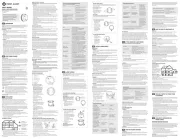
1 September 2025

30 Augustus 2023

30 Augustus 2023

30 Augustus 2023

30 Augustus 2023

30 Augustus 2023

9 Mei 2023

1 Mei 2023

12 April 2023

12 April 2023
Handleiding Niet gecategoriseerd
- Batavia
- Essentiel B
- Aviom
- E.ziclean
- Franke
- SoundTube
- Magma
- Garden Lights
- Stairville
- Woodland Scenics
- Intel
- Elation
- Davey
- Hitron
- Wise
Nieuwste handleidingen voor Niet gecategoriseerd

15 September 2025

15 September 2025
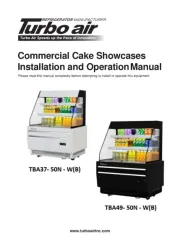
15 September 2025
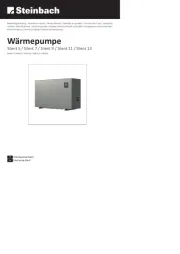
15 September 2025
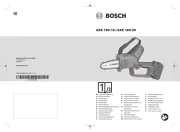
15 September 2025

15 September 2025

15 September 2025
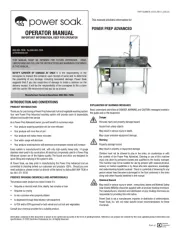
15 September 2025
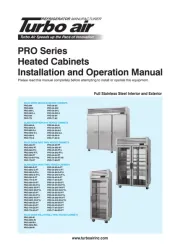
15 September 2025
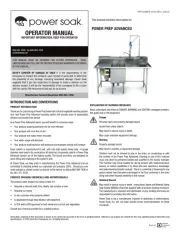
15 September 2025